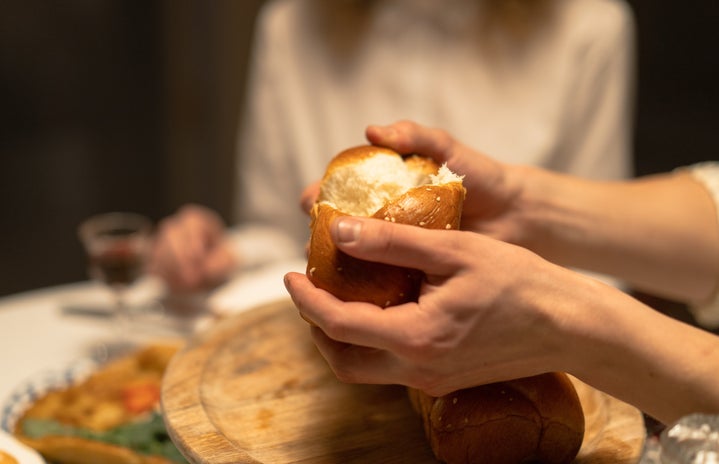While we live in the United States and eat at a lot of chain restaurants, it is easy to forget what food actually means. Someone’s food culture simply explains the reasons why they eat certain foods, when they eat them and how it makes them feel. Does it mean family? Love? Just a tradition? Or does it mean happiness? Well, while food may mean one thing to you, it means something completely different to someone else in the world. This list of food traditions and dishes around the world is a very tiny glimpse of what food can bring to the table.
- Turkish breakfast
-
Breakfast is very important to Turkish families. According to Turkish Food Culture and Cuisine, Turks have many green, veggies, feta cheese, eggs, honey, cream and more combined in their breakfast meal to create a healthy and rich dish. They also include fresh bread such as cornbread, sesame donuts or Turkish bagels for their breakfast. Turks have social gatherings on Sunday, similar to Americans, to have a breakfast feast with many added ingredients. Their food culture genuinely includes that breakfast is the most important meal of the day!
- Japan’s autumn moon viewing
-
The word “Tsukimi”, or “looking at the moon”, holds a very old tradition that Japan celebrates every year. It is a celebration on the fifteenth day of the eighth month of the old lunar calendar, where the Japanese view the autumn moon and enjoy its beauty. A part of the celebration includes making “Tsukimi-Dango”, which are round rice dumplings that represent the full moon. In addition, the dumplings are believed to bring health and happiness. Tsukimi gained another meaning – dishes of which are topped with egg yolks such as ramen, because of the visual similarity between the full moon and egg yolk.
- zimbabwe kapenta
-
A delicious meal that visitors can’t wait to try in Zimbabwe is crisp-fried kapenta with sadza. Kapenta is a type of fish native to Lake Tanganyika and is eaten as a good source of protein for Zambia and Zimbabwe lakeside residents. The unique fish is served alongside porridge, or sadza, green veggies, tomatoes, onions and groundnut powder. Interestingly, you do not use a fork and knife to eat this dish. You actually have to scoop the fish and side veggies in your hand and roll/dip them in the sadza.
- dinner traditions in India
-
In India, being invited over to someone’s house is considered an honor, the hosts are very hospitable because they love to have others in their homes. Once the guest arrives in the host’s home, they relax and have a few drinks before dinner begins. When you begin eating, you must eat with only the right hand because the left hand is considered ‘unclean’ and may even offend the host. Depending upon how many people attend the dinner, the host could serve food buffet style with many different options to choose from. You will also be offered more food throughout the meal, as well as be served dessert, coffee or tea after the main course.
- Famous Australian Dessert
-
Lamingtons are a delicious Australian dessert that originated from Brisbane and is named after Lord Lamington who was a Governor of Queensland from 1896 to 1901. Ever since, the sugary delicacy has been enjoyed all over Australia. The cake is supposed to be made as a fluffy sponge, coated in chocolate the next day and topped off with coconut. Chocolate is common, however, the baker can be very creative with this dessert and it’s flavors.


